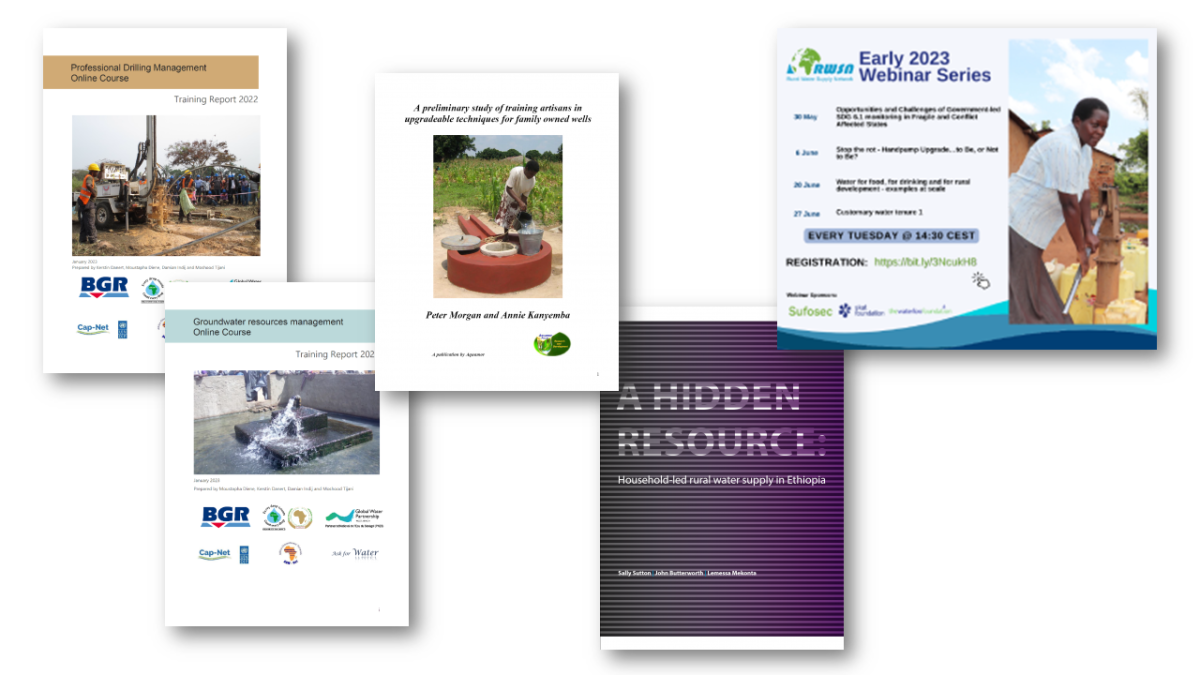2023 is racing by all too quickly! But as we enter the second half of the year, let’s look at how rural water professionals are using our the network:
- membership of our RWSN LinkedIn group is going wild: 16,795 people! This is up from 12,748 in January (by comparison it took the group 8 years, from 2012 to 2020, to get to over 5,000 members)
- Although our Twitter following grew from 4,174 to 4,455 so far this year, engagement is down. Is Twitter dead? For serious exchange, perhaps yes.
Nearly 10,000 documents were downloaded from the RWSN online library so far this year, and here is the current top ten:
- Professional Drilling Management Online Course 2022, Dr Kerstin Danert (2023)
- Groundwater Resources Management Online Course 2022, Prof. Moustapha Diene (2023)
- A Hidden Resource: Household-led rural water supply in Ethiopia, Dr Sally Sutton, Dr John Butterworth (2012)
- A preliminary study of training artisans in upgradeable techniques for family owned wells, Dr Peter Morgan (2012)
- RWSN Webinar early series, May- Jun 2023, RWSN (2023)
- The risks of a technology-based MDG indicator for rural water supply, Dr Sally Sutton (2008)
- Manufacturing Process for the 2,000-liter Thai Jar, Jon Naugle (2009)
- Solar Water Pumping Miniguide, IOM (2018)
- Professionalising community management of rural water supply, Prof. Richard Carter (2023)
- Borehole Drilling – Planning, Contracting & Management: A UNICEF Toolkit, RWSN (2018)
Just outside the top ten we have:
- Stop the rot: handpump functionality, corrosion, component quality and supply chains, Dr Kerstin Danert (2022)
- Stop the Rot: Overview of handpump corrosion and maintenance challenges for a sustainable drinking water supply for rural populations in Cameroon – Case study of twenty pumps, Dr Abou Aziz (2023)
- Results-Based Contracts for Rural Water Services, Uptime Consortium (2020)
- Afridev: Handpump Specification, RWSN/Skat Foundation (2007)
- India Mark Handpump Specifications, RWSN/Skat Foundation (2007)
So what can learn from this?
Well, we try and curate a variety of resources that we think are likely to the most useful for rural water operators, regulators, researchers and policy-makers, but it is clear that from our online library of more than a 1,000 reports, books and presentations, what you want from us is practical guidance.
It’s interesting that some the resources above are more than a decade old, but that shows that good advice is timeless. We don’t just hold work from RWSN, but from wherever we can find it, but it is notable that the work of RWSN legends Peter Morgan, Kerstin Danert, Dotun Adekile, Richard Carter, Sally Sutton, John Butterworth, Moustaphe Diene, and Jon Naugle are so prominent in what users download. And thank you to all our authors, reviewers, presenters and members who generate and share such valuable content.
This year we are preparing our RWSN strategy to 2030, the end of the SDGs. So, what practical guidelines or standards are missing from your work that we could work with partners to create?








